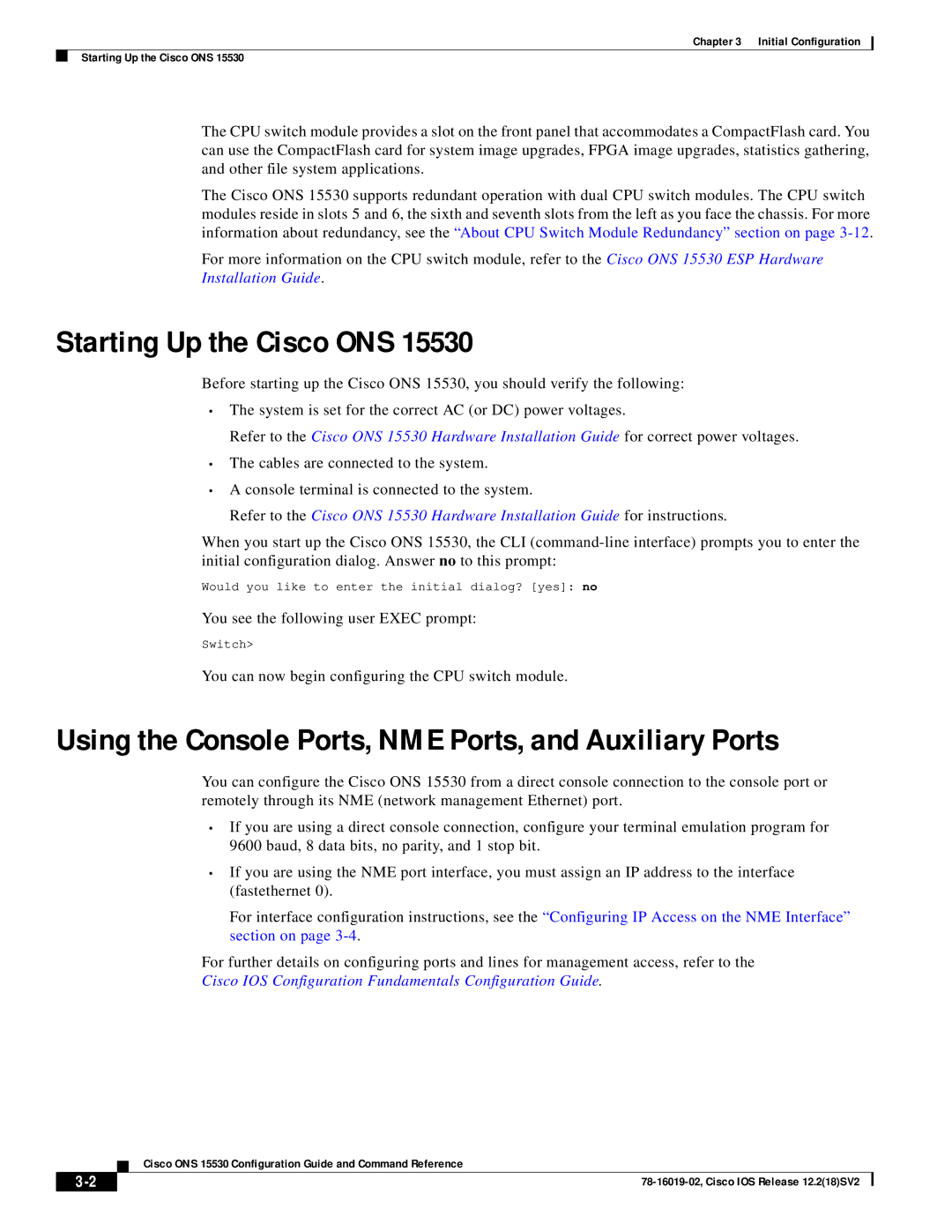
Chapter 3 Initial Configuration
Starting Up the Cisco ONS 15530
The CPU switch module provides a slot on the front panel that accommodates a CompactFlash card. You can use the CompactFlash card for system image upgrades, FPGA image upgrades, statistics gathering, and other file system applications.
The Cisco ONS 15530 supports redundant operation with dual CPU switch modules. The CPU switch modules reside in slots 5 and 6, the sixth and seventh slots from the left as you face the chassis. For more information about redundancy, see the “About CPU Switch Module Redundancy” section on page
For more information on the CPU switch module, refer to the Cisco ONS 15530 ESP Hardware Installation Guide.
Starting Up the Cisco ONS 15530
Before starting up the Cisco ONS 15530, you should verify the following:
•The system is set for the correct AC (or DC) power voltages.
Refer to the Cisco ONS 15530 Hardware Installation Guide for correct power voltages.
•The cables are connected to the system.
•A console terminal is connected to the system.
Refer to the Cisco ONS 15530 Hardware Installation Guide for instructions.
When you start up the Cisco ONS 15530, the CLI
Would you like to enter the initial dialog? [yes]: no
You see the following user EXEC prompt:
Switch>
You can now begin configuring the CPU switch module.
Using the Console Ports, NME Ports, and Auxiliary Ports
You can configure the Cisco ONS 15530 from a direct console connection to the console port or remotely through its NME (network management Ethernet) port.
•If you are using a direct console connection, configure your terminal emulation program for 9600 baud, 8 data bits, no parity, and 1 stop bit.
•If you are using the NME port interface, you must assign an IP address to the interface (fastethernet 0).
For interface configuration instructions, see the “Configuring IP Access on the NME Interface” section on page
For further details on configuring ports and lines for management access, refer to the
Cisco IOS Configuration Fundamentals Configuration Guide.
| Cisco ONS 15530 Configuration Guide and Command Reference |
